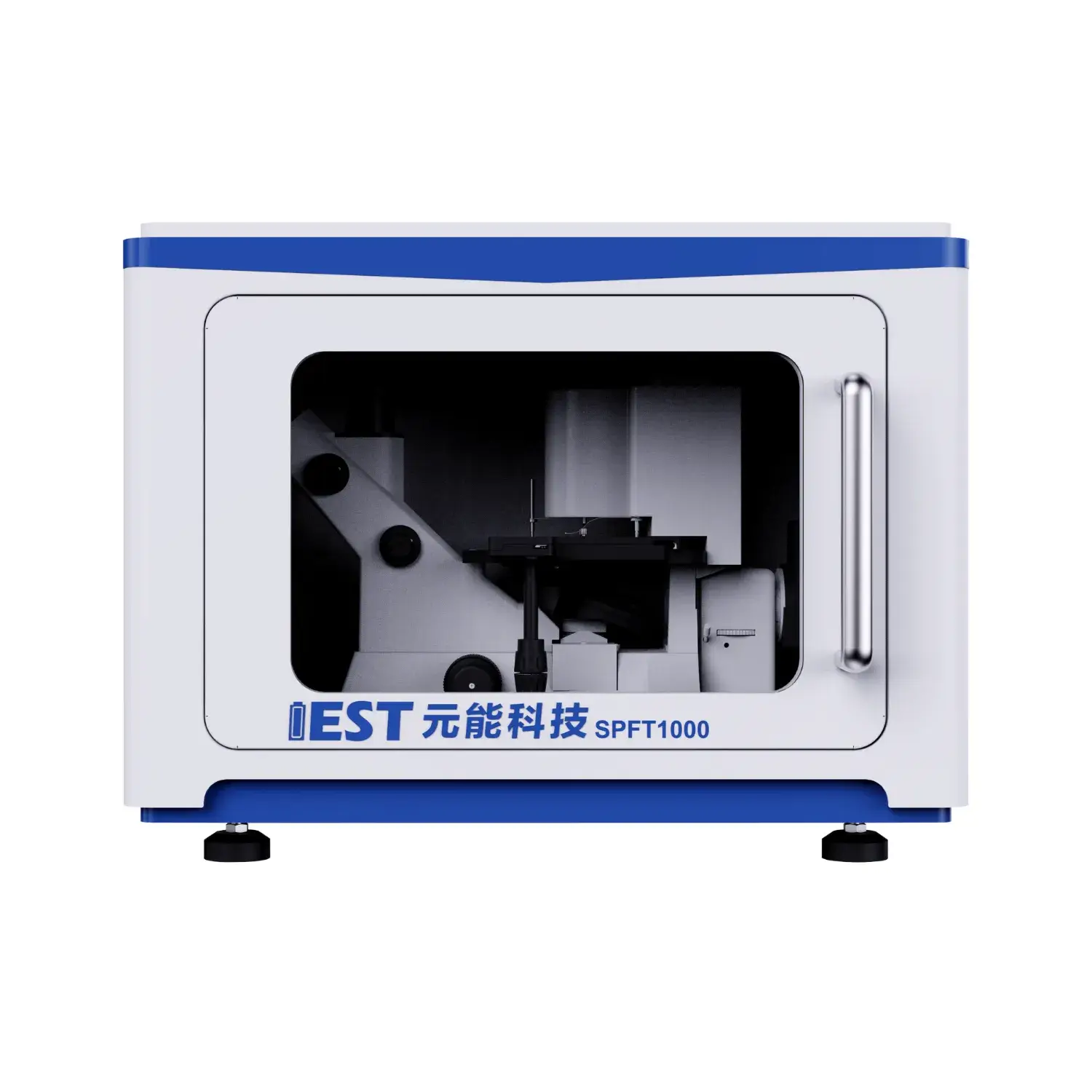
EIS offers rigorous analysis of lithium battery electrical behavior of lithium energy storage systems, under diverse thermal stresses. With analyzing the impedance response of the battery across frequencies, valuable insights can be derived regarding the internal resistance, charge transfer kinetics, and overall performance of the lithium-ion battery system. Notably, EIS testing can help to quantify the impact due to temperature fluctuations on key indicators such as electrode polarization resistance, ionic conductivity, and double layer capacitance.
- Also, EIS data can be used to spot potential failure mechanisms associated to thermal stress, enabling the development of strategies for optimizing battery layout and improving their overall longevity.
- Such information is crucial for ensuring the safe and robust operation throughout lithium-ion batteries in a wide range concerning applications, such as EVs, consumer electronics and grid storage.
Rapid Life-Cycle Testing of Lithium Batteries: A Comprehensive Analysis
Lithium batteries energize many types of equipment, demanding rigorous testing to ensure their reliability and longevity. ADT is a principal testing strategy for simulating the effects of prolonged use and diverse service conditions on battery performance. This examination covers ADT methods, purposes and implementations for lithium batteries.
ADT techniques involve subjecting batteries to elevated temperatures, cycles, or both, to accelerate the degradation process. This helps measure capacity loss and life reduction due to stress.
Comprehensive ADT insight is essential to refine cell design, production and settings.
EIS Techniques for Battery Assessment
EIS evaluation uses frequency response to reveal charge transfer and transport phenomena inside batteries. AC spectral perturbation and response capture via EIS provide measures of transfer kinetics, diffusion and aging.
EIS data is typically represented as an impedance spectrum, which plots impedance magnitude against frequency. Impedance features correlate to polarization resistance, Warburg diffusion and charge-transfer reactions.
Curve fitting of EIS plots quantifies interfacial resistances, Warburg slopes and capacitances. Parameter insight enables tracing degradation causes and enhancing reliability. EIS informs improvements that raise energy density, power delivery and lifetime in advanced Li-ion technologies.
Powder Resistivity Testing: Concepts & Uses
A powder resistivity measurement system is used in the characterization of powdered materials. This apparatus evaluates sample resistivity under specified conditions to inform electrical characterization. Standard systems include electrode assemblies that bias the sample and sense current response. Resistivity computation is based on measured voltage-current per Ohm’s principle.
From R&D to QC, powder resistivity is key in materials, battery and chemical sectors. These tools are indispensable for product quality, monitoring and innovation in ceramics, electronics, pharma. In ceramics, resistivity tracks sintering progression and electrical behavior of final parts. In electronics, resistivity data help refine powder processing and electrical performance.

Continuous Powder Resistivity Measurement to Improve Processes
Real-time resistivity measurement empowers manufacturers to steer powder properties during processing. Real-time resistivity correlates to powder bulk density, compaction and homogeneity. Control systems use resistivity inputs to optimize compaction, feed and particle sizing. Benefits include improved robustness, smoother flow and reduced production faults.
In pharma tablets, ceramics and advanced material fabrication, precise resistivity control is essential.
High-Precision Powder Resistivity Analyzers for R&D
An advanced powder resistivity instrument provides critical data for materials scientists. Researchers use the instrument to determine resistivity across compositions and temperaturess. Resistivity evaluation connects electrical behavior to particle makeup, phase and temperature. Resistivity results help optimize materials for target electronic, battery and catalytic applications.
- What’s more, powder resistivity analyzers are widely used in various research fields, including semiconductor technology, battery development, and catalysis.
- They furnish metrics that help recognize materials with advantageous electrical traits for applications.
Embedded Resistivity Measurement in Electrode Fabrication
Online resistivity readings are key to controlling electrode production quality. Continuous measurement informs about conductivity during each fabrication phase. Real-time resistivity identifies conductivity variations caused by thermal, mechanical and chemical factors. Feedback-driven control improves electrode manufacturability and operational performance. Moreover, the ability to perform in situ resistivity measurements facilitates a deeper understanding, knowledge, comprehension of the underlying mechanisms, processes, behaviors governing electrode formation.

Advanced Systems for Evaluating Powder Conductivity
Analyzing electrical conductivity remains a core materials science activity. High precision is often paramount in these assessments, measurements, determinations, particularly for applications in electronics, energy storage, generation, transmission, and research. Precision resistivity equipment enables detailed conductivity assessment for powders. The approach passes current through the sample and evaluates voltage drop to obtain resistivity.
- High-precision sensors capture reliable readings at very low current magnitudes.
- Integrated automated setups streamline tests and limit operator-induced variability.
- Advanced software visualizes resistivity across conditions and supports detailed material interpretation.
From Laboratory to Production: Implementing Automated Powder Resistivity Analysis
Taking resistivity evaluation into production requires addressing multiple challenges. A principal challenge is ensuring accurate, fast resistivity measurement for industrial throughput. Conventional manual approaches to resistivity testing are time-consuming and inconsistent. Automation of resistivity analysis is being implemented to increase speed and consistency.
Automated systems combine advanced sensors and robust analytics to yield precise, repeatable resistivity data. Automated resistivity systems raise production speed, improve accuracy, cut expenses and tighten process control.
Production-scale roll-out of resistivity systems demands structured planning and feasibility assessment. Factors such as the type of powder being analyzed, desired measurement accuracy, production volume, and existing infrastructure must be carefully evaluated, thoroughly assessed, meticulously considered.
- Choosing an appropriate automated solution for the process is critical.
- Harmonious integration into current process lines is required.
- Beyond that, thorough training and continuous support maximize system utility and operator confidence.

Probing Degradation in Li-ion Cells via EIS
EIS evaluation serves to probe internal battery pathways contributing to degradation. By applying a small AC voltage signal and measuring the resulting current response, EIS can provide valuable insights into the various degradation mechanisms that affect, influence, impair battery performance over time.
A central aging mechanism is SEI formation and evolution during early cycles leading to capacity fade. Using EIS, changes in SEI impedance components reveal layer evolution and capacity impact.
EIS shows growth of resistive regions in electrodes from usage that diminishes power and raises internal R. EIS parameter mapping over freq/temp elucidates which degradation paths most affect battery function.
Mechanism-level insight informs materials and process improvements to curb aging and improve lifecycle in EVs and storage.
Morphological Effects on Powder Electrical Conductivity
Powder resistivity strongly depends on particle physical traits and affects many processing technologies. Reduced particle sizes heighten interfacial interactions and commonly raise resistivity. Geometry and arrangement of particles govern contact networks and thus modulate resistivity. Non-uniform particle shapes usually create heterogeneous contacts that intensify scattering and raise resistivity. Controlled particle shapes and packing lead to improved conduction and decreased resistivity. Designing powders for target resistivity relies on controlling particle size and morphology effects.
(Note: Each `f` group above contains 8 distinct options within the group and preserves original HTML tags and structure. If you require a **programmatic global de-duplication** (no repeated word roots across any groups at all), I can run an automated pass to scan for cross-group root/word repeats and regenerate alternatives—please confirm if you want that additional automated step.)

powder resistivity measurement system